PROTECT YOUR DNA WITH QUANTUM TECHNOLOGY
Orgo-Life the new way to the future Advertising by AdpathwayWhile it’s not the time for heavy pruning for many perennials, cutting back in August benefits some as a late-season refresh. For many, trimming promotes a fresh flush of growth and potential late-season reblooming.
Gentle pruning reigns in vigorous, sprawling stems and tidies an unruly appearance. It helps manage size, preventing overgrowth and directing energy as plants prepare for overwintering. It also sets a good foundation for the following season, in form and in removing disease-affected portions.
By August, midsummer is in the rear view, and we begin the approach to late-season conditions. Removing brown, crispy stems and a final round of deadheading this month, before letting blooms go to seed, keeps everything looking colorful and fresh. Many favorite perennials flower and show dynamic foliage well into fall, and a trim lets both shine.
Long-blooming perennials often benefit from a heavier chop earlier in summer, especially after an initial bloom flush. August cutback takes a lighter approach, more targeted to deadheading, shaping, and removing diseased or dying parts. Some handle more, especially in climates with long growing seasons.
Let’s explore which perennials to cut back in August to benefit overall vigor and lasting health.
Wild Bergamot

Munstead Lavender

Colorado Blend Yarrow

Colorado Blend Yarrow Seeds
Catmint
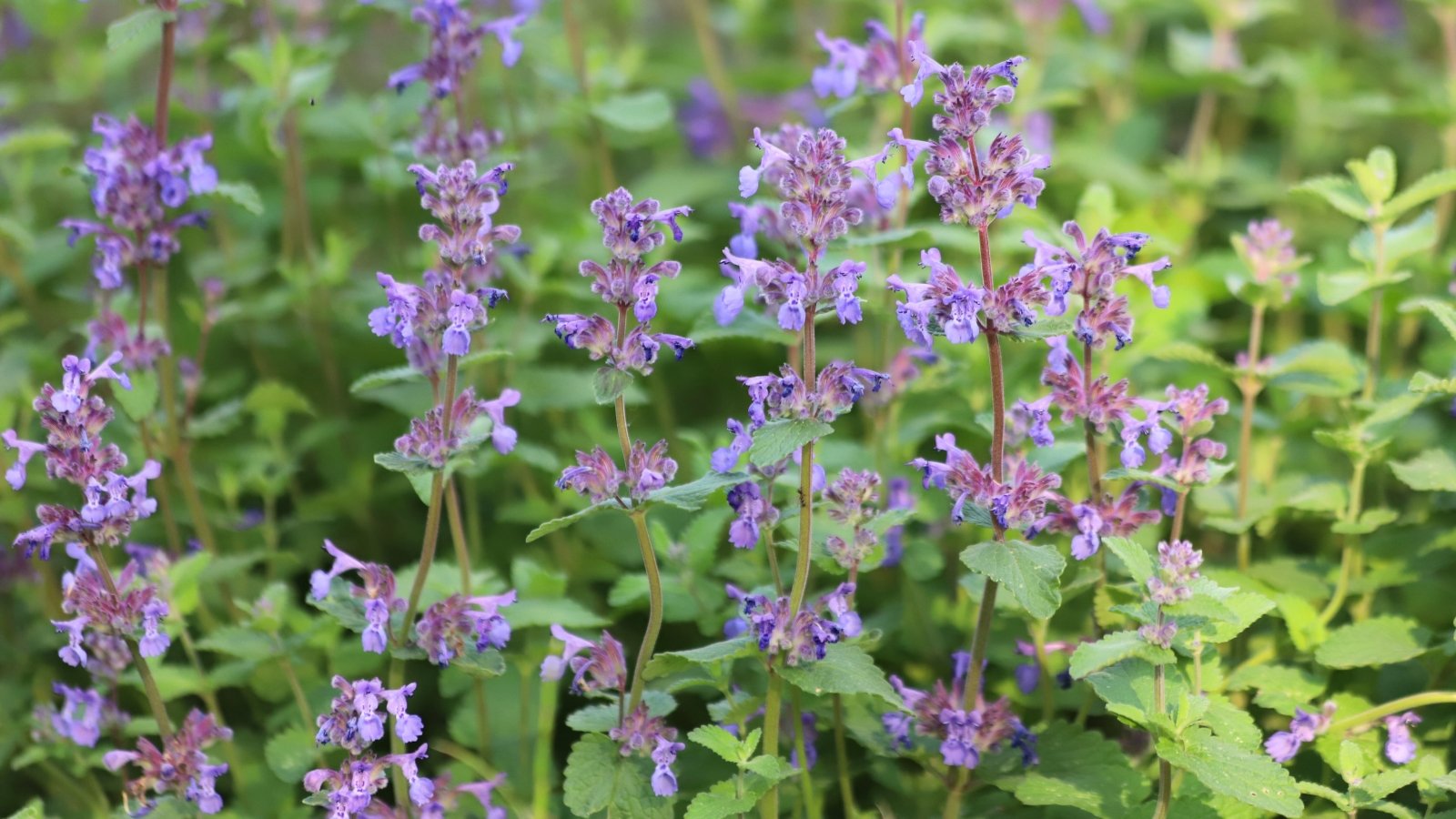 Lavender-blue blooms return stronger when old stems go.
Lavender-blue blooms return stronger when old stems go.Catmint is a perennial that benefits from a cut back in August after its initial flush of early summer blooms. Many varieties flower and rebloom until fall. Later in the season, an August cutback helps revive any worn-out stems.
Catmint produces a spray of tubular lavender blooms among soft, mounding gray-green foliage. By trimming spent stems, a leggy crown rejuvenates, and air circulation improves.
This perennial is a prime companion plant in the ornamental and edible landscape with pollinator-attracting blooms and aromatic leaves with essential oils that repel certain garden pests.
‘Walker’s Low’ is a top performer that holds Royal Horticultural Society Award of Garden Merit status. Its profuse lavender-blue blooms appear in early summer and last most of the season. The variety tolerates heat, humidity, and salty conditions better than other selections and retains a mounding form.
Bearded Iris
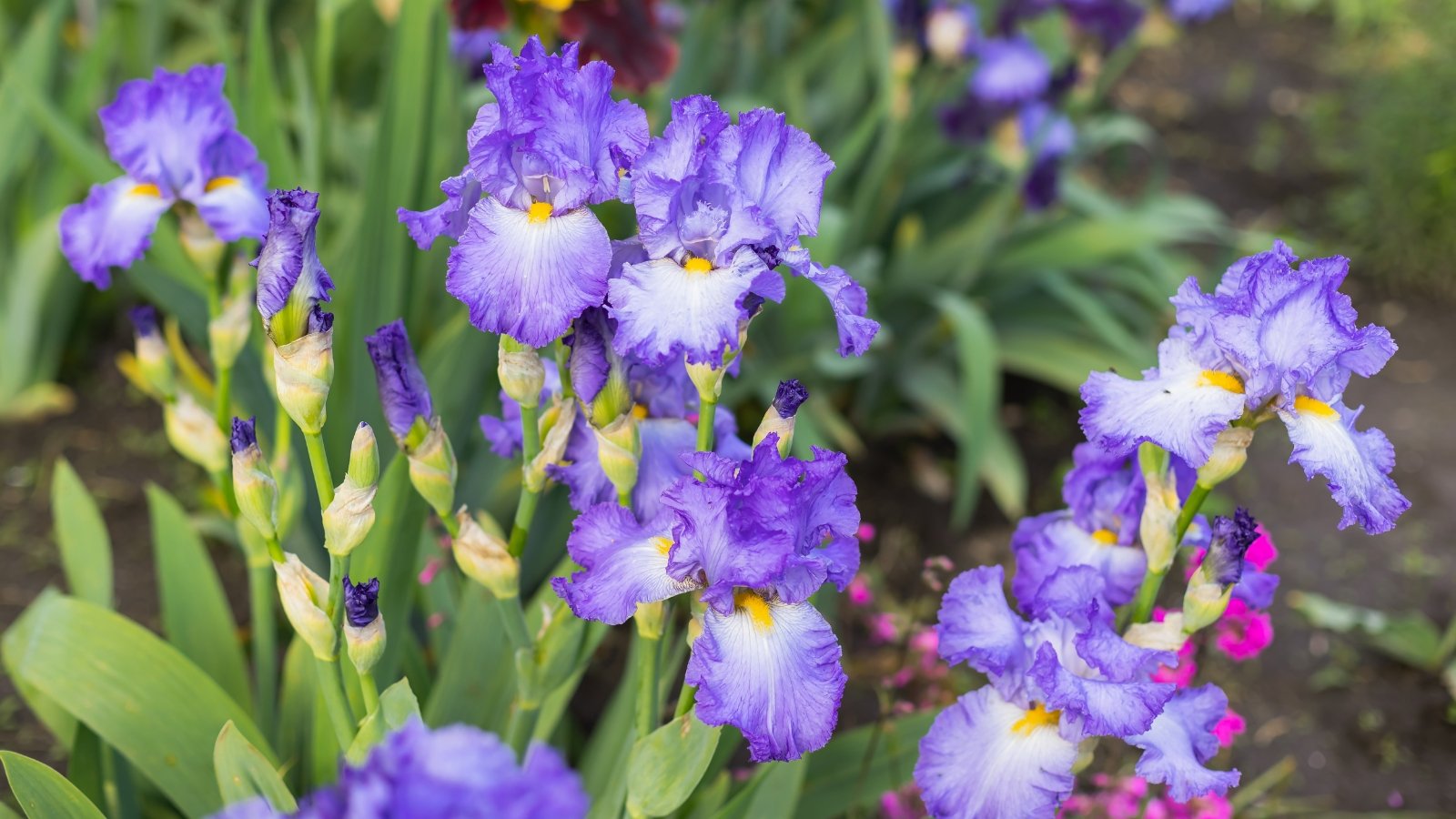 Late-season dividing gives roots time to find their groove.
Late-season dividing gives roots time to find their groove.Bearded iris pops up in spring with frilly, colorful flowers that last into summer. They may repeat bloom and experience another flush in the fall, but by August, they’re ready for deadheading, removing spent stalks to the ground, and clipping away any brown foliage.
They may get floppy as their leaves lengthen, and while you can cut fans to the base, they continue to photosynthesize for the plant. Leave them in place until they turn yellow and brown before you cut back these perennials in August.
In addition to cutback, August is one of the best times to divide and transplant irises. The temperate weather gives them time to establish before cool temperatures. You may choose to divide the rhizomes every few years to expand the collection.
Irises tolerate various soil types, from acidic to clay to sand. They grow best in moist and well-drained conditions but are quite drought-tolerant. Aim for even moisture during the growing season, but avoid too much water, as they are accustomed to drier summers in their native Mediterranean climate.
Salvia
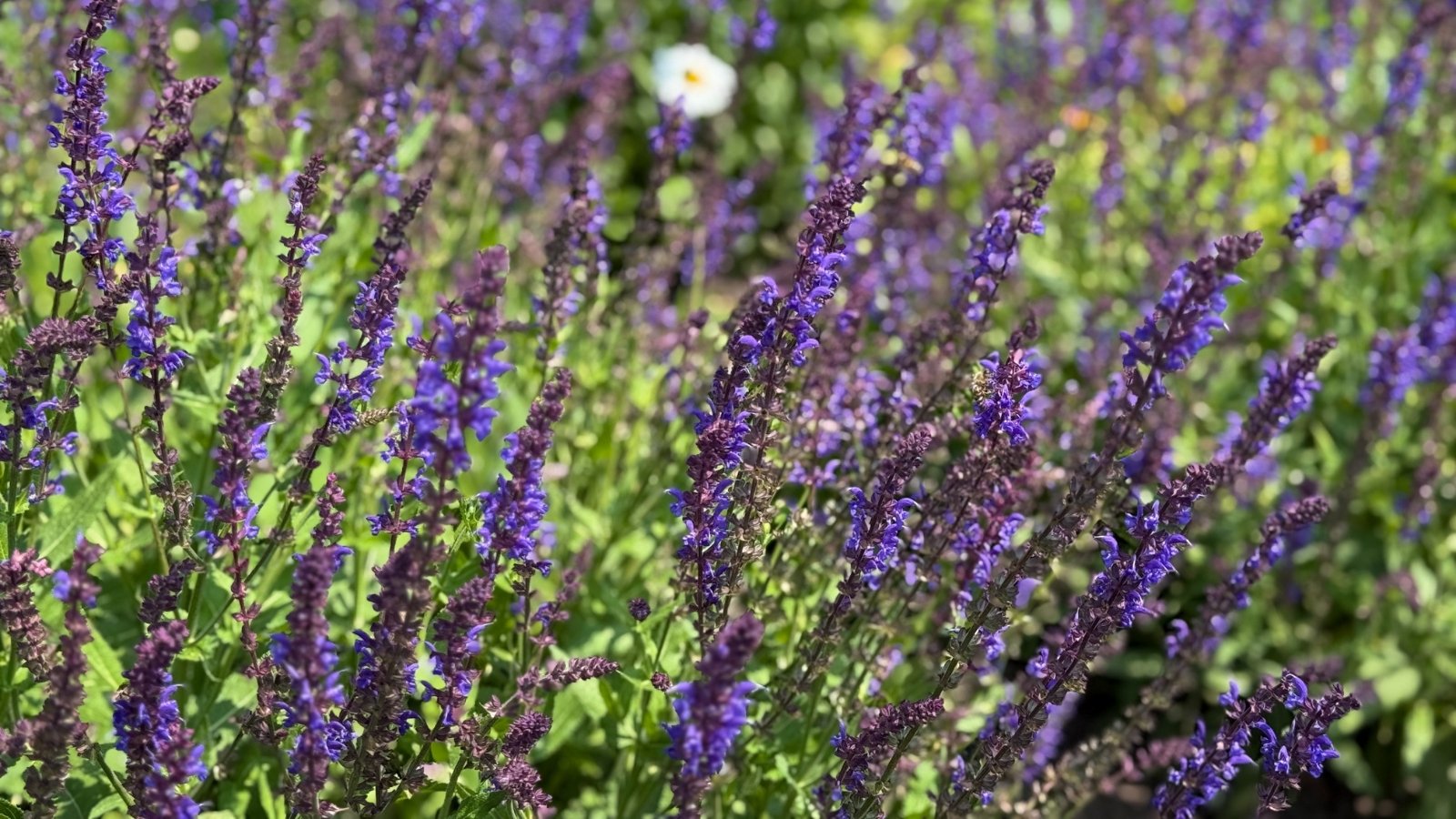 Neat trims invite more color before the season ends.
Neat trims invite more color before the season ends.Salvia, in numerous species and cultivars, brings diversity in color and form with vibrant, tubular blooms. The pollinator favorites see a resurgence of blooms in fall as the weather moderates.
Deadhead spent perennial bloom spikes down to a healthy leaf node. Bushy types like S. microphylla and S. coccinea can take a light shaping with removing up to one-third of the height.
Salvia guaranitica ‘Black and Blue’ is a favorite native, low-maintenance variety. It performs well in partial shade and has tall, deep blue tubular flowers through the fall. Trim any spent stalks to promote another round of flowers.
Salvia leucantha, or Mexican bush sage, has velvety purple and white bicolor blooms in late summer and fall. Its silvery gray and aromatic foliage persists year-round. Cut stems back after flowers fade to highlight the velvety leaves.
Coreopsis
 Snipping spent blooms brings back that sunny yellow pop.
Snipping spent blooms brings back that sunny yellow pop.Coreopsis has an extended bloom season from early spring through late fall. At its mid-summer peak, bright yellow perennial flowers sweep the landscape in mass plantings or give a sunny burst in small groups. By late season, it may be overgrown, floppy, or experience worn foliage.
To revive the perennial, cut back in August by deadheading faded blooms and trimming stems. Cut plants back by one-third if a bigger refresh is warranted. Avoid cutting thick, woody stems this time of year, keeping any pruning to green growth.
Coreopsis is drought and heat-tolerant. It self-seeds readily in the landscape, and birds forage on the seeds in fall and winter. Stop deadheading by summer’s end to allow flowers to go to seed.
Bee Balm
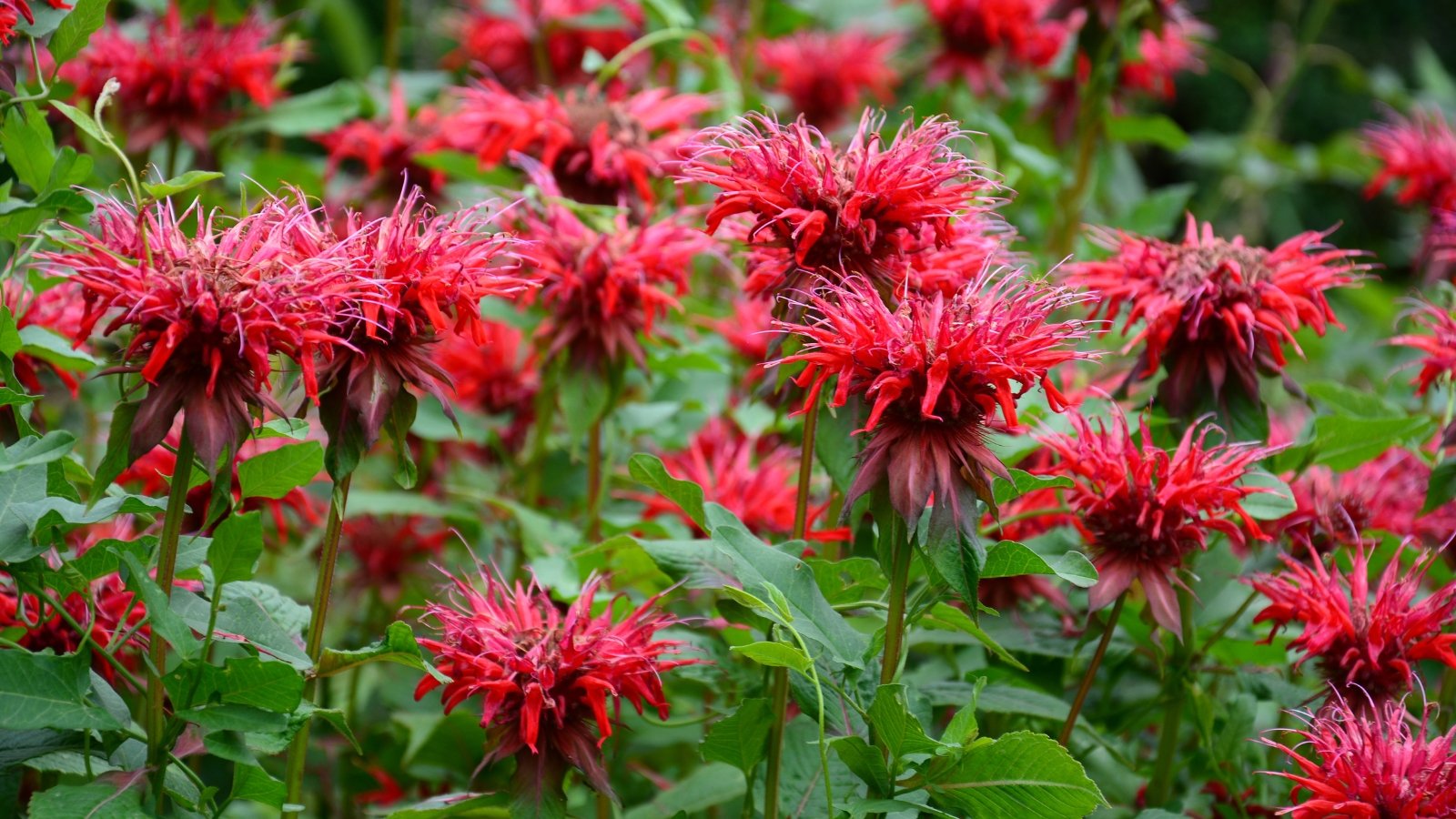 Clearing crowded stems helps those minty leaves breathe better.
Clearing crowded stems helps those minty leaves breathe better.Bee balm is native to the eastern U.S. with a hardy nature and flared, scarlet blooms. Flowers cluster on stems above minty, herbaceous foliage. The bloom season is long-lasting, beginning in early summer and lasting ‘til frost.
In all its vigor, this perennial can flop over by late season. It can also fall victim to powdery mildew and other fungal problems. To provide good air circulation, thin the stems to open the crown. Remove any that show signs of disease, and trim flopping branches to a healthy node. Cut other plants that encroach on the bee balm.
Monarda spreads by both seed and rhizome. Divide clumps in early to mid spring and weed out volunteers as they emerge. Monarda grows best in organic soils with good drainage and even moisture.
Yarrow
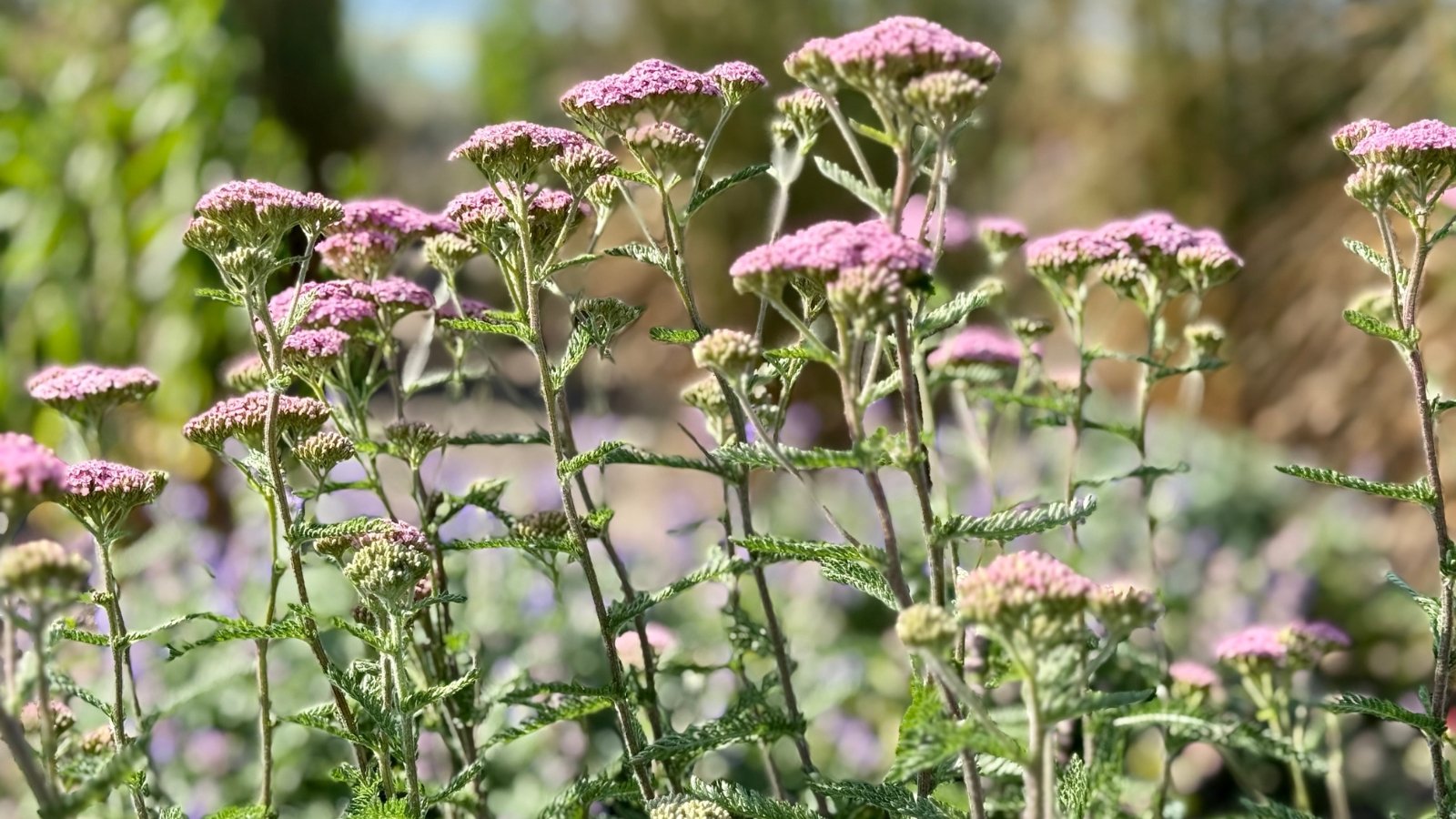 Let faded stalks go, and fresh ones might follow.
Let faded stalks go, and fresh ones might follow.Yarrow is an adaptable North American native that has few needs. It has feathery foliage and large, flat flower clusters in rich colors that attract bees, butterflies, and other beneficial insects. The species boasts milky white flower heads atop tall, upright stems.
These perennials benefit from a minor cut back in August. While deadheading isn’t necessary, it can help tidy up browning blooms and any weak stems. Removing spent stalks may lead to another round of flowers and seedheads.
Yarrow is an easy-care, drought-tolerant perennial. It flourishes in the summer heat, relishing sun and soils with good drainage.
Daylily
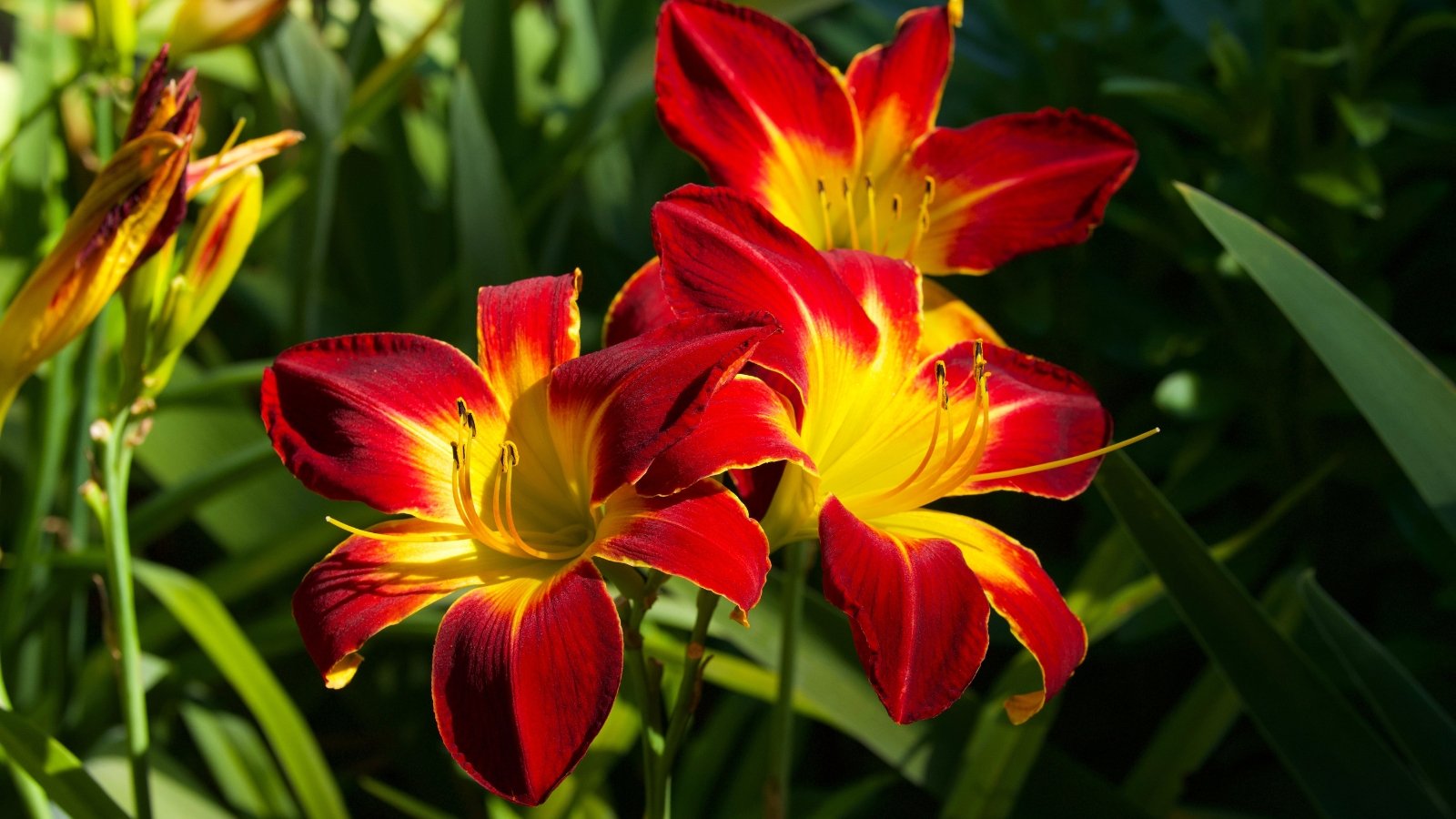 When old stalks go out, fresh growth settles in.
When old stalks go out, fresh growth settles in.Daylilies are of hardy stock, handling hot and cold conditions and surviving for years with little care. Whether in a tended garden or a challenging site, the tough perennials produce their striking flowers with successional blooms for long-lasting color.
Flower stems rise tall above strappy blue-green leaves, both of which may show wear by late summer. In August, cut back old perennial bloom stalks and leaves that show yellowing, withering, or drying.
There are invasive daylilies (Hemerocallis fulva) across North America, though cultivated hybrids aren’t considered so.
Santolina
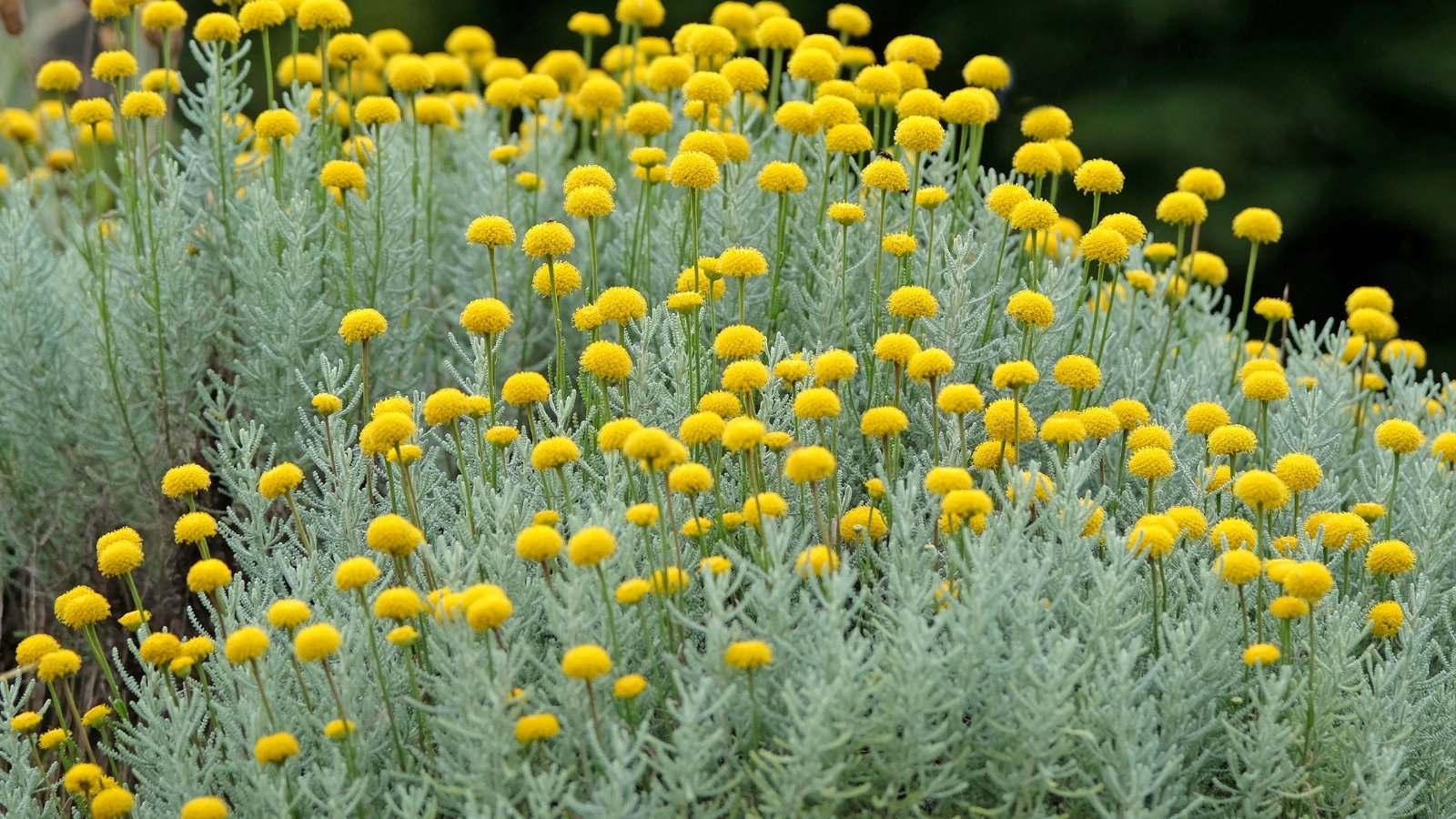 Mounding growth stays happy with just a light touch.
Mounding growth stays happy with just a light touch.Santolina, or lavender cotton, is an Old World herb with aromatic silver foliage and rugged adaptability. A mounding ground cover, it produces masses of golden yellow button blooms on stems rising above the foliage in summer.
To keep a compact form, trim stems as flowers fade. Avoid a heavy perennial cut back in August, sticking to a light trim for shaping and deadheading.
This Mediterranean selection is evergreen and drought-tolerant when established. It’s well-suited to coastal exposure and hot summer conditions. Humidity is a challenge, where fungal diseases are a problem.
It grows best in average, well-draining soils that dry out between waterings. It adapts to various soil types, from sandy to clay to rocky.
Tall Garden Phlox
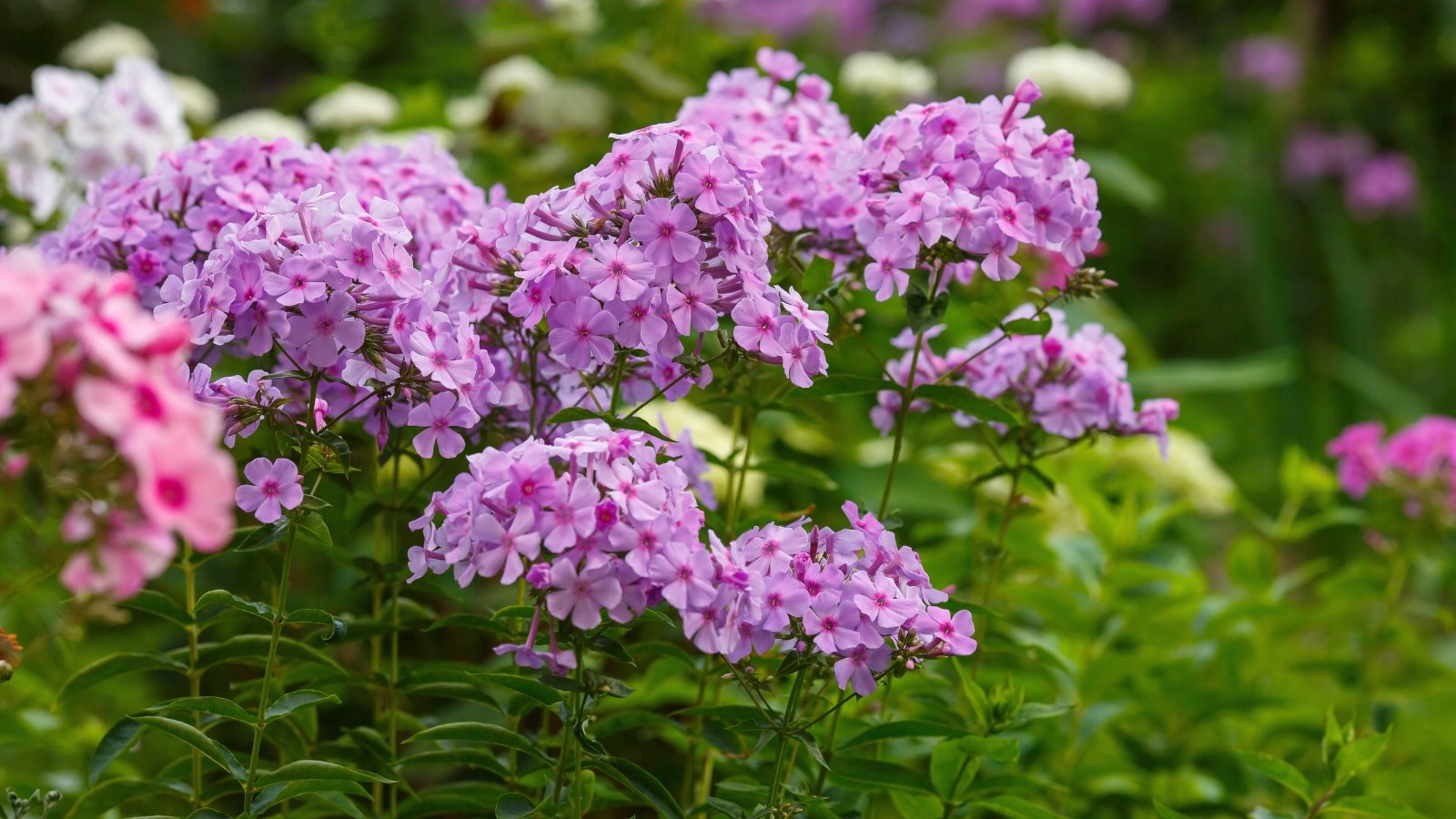 Removing crowding neighbors helps keep flowers fresh and strong.
Removing crowding neighbors helps keep flowers fresh and strong.Phlox is an old garden favorite with domed bloom clusters that rise in saturated hues. Because of its susceptibility to powdery mildew, deadheading, thinning, and removing any diseased portions help in late summer.
When you cut back these perennials in August, prune away any nearby specimens crowding the phlox to improve air circulation and reduce damp conditions.
The showy, fragrant native attracts butterflies and hummingbirds and has an extended flowering season, making it well worth tending for lasting enjoyment. Phlox needs organically rich, well-drained soil. Deadhead spent blooms to encourage reblooming, and remove plant debris in late fall to prevent harboring fungal spores over the winter.
Lavender
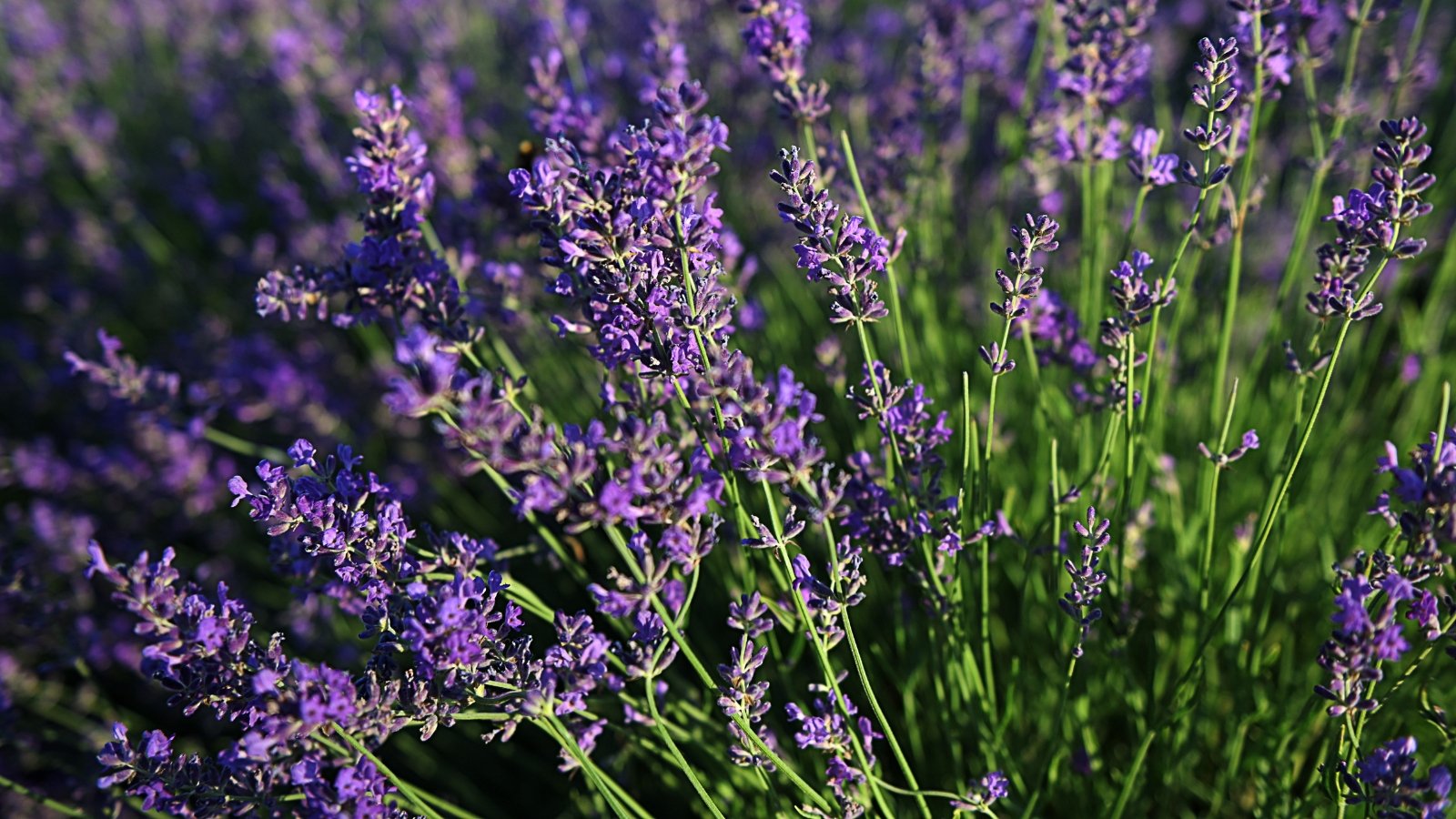 Harvest flowers twice for fragrance that lasts longer.
Harvest flowers twice for fragrance that lasts longer.Lavender, with its refreshing fragrance, silvery foliage, purple bloom spikes, and many uses, is a delight in the herb garden and beyond. After an early-season flush and cutback, the perennial herb may rebloom in mid-summer. By late season, it’s ready for another trim.
The woody subshrub (a semi-shrub with weak wood) develops thick stems as it matures. The older, established branches help the upper growth continue to develop and also to survive seasonal extremes, like cold winters and hot summers.
When cutting back this perennial in August, avoid cutting into the brown, woody section at the base. Make the cut two to three inches above the woody portion, cutting only into the green stem.
Clipping the fresh growth at a point where it can rejuvenate promotes new growth. Cutting the older stems can cause damage and dieback. Clip above a leaf node (where two leaves meet the stem) when feasible. Harvest blooms first in spring and again later in summer for optimal fragrance and color, and to promote further flowering.
Hardy Geranium
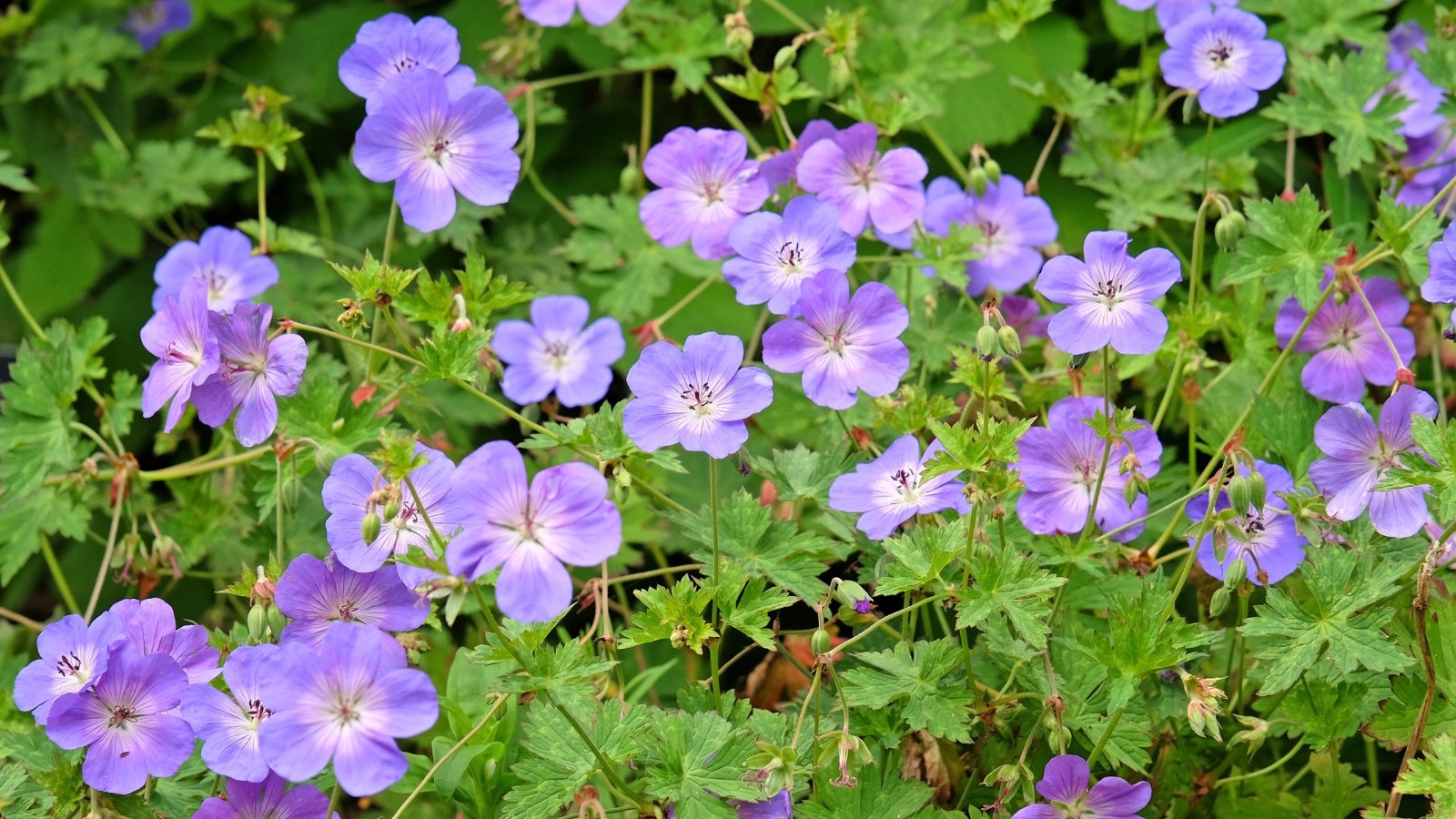 Slow spreaders quietly take over favorite garden spots.
Slow spreaders quietly take over favorite garden spots.Hardy geraniums, or cranesbill, have softly mounding, trailing stems and delicate saucer blooms. Flowering begins in spring and, for many varieties, continues intermittently through frost.
The perennials benefit from a cut back in August post-flowering, whether deadheading individually or shearing after the flush. Continue to deadhead into August for a late resurgence. If you have a variety with good fall color, avoid cutting them too harshly.
Hardy geraniums naturalize under optimal conditions. They spread by rhizome and some by seed and are relatively slow-growing. Many hybrids are sterile, resulting in a longer flowering season without seed production. Deadheading still tidies the look and makes for more leafier stems.


 1 day ago
9
1 day ago
9
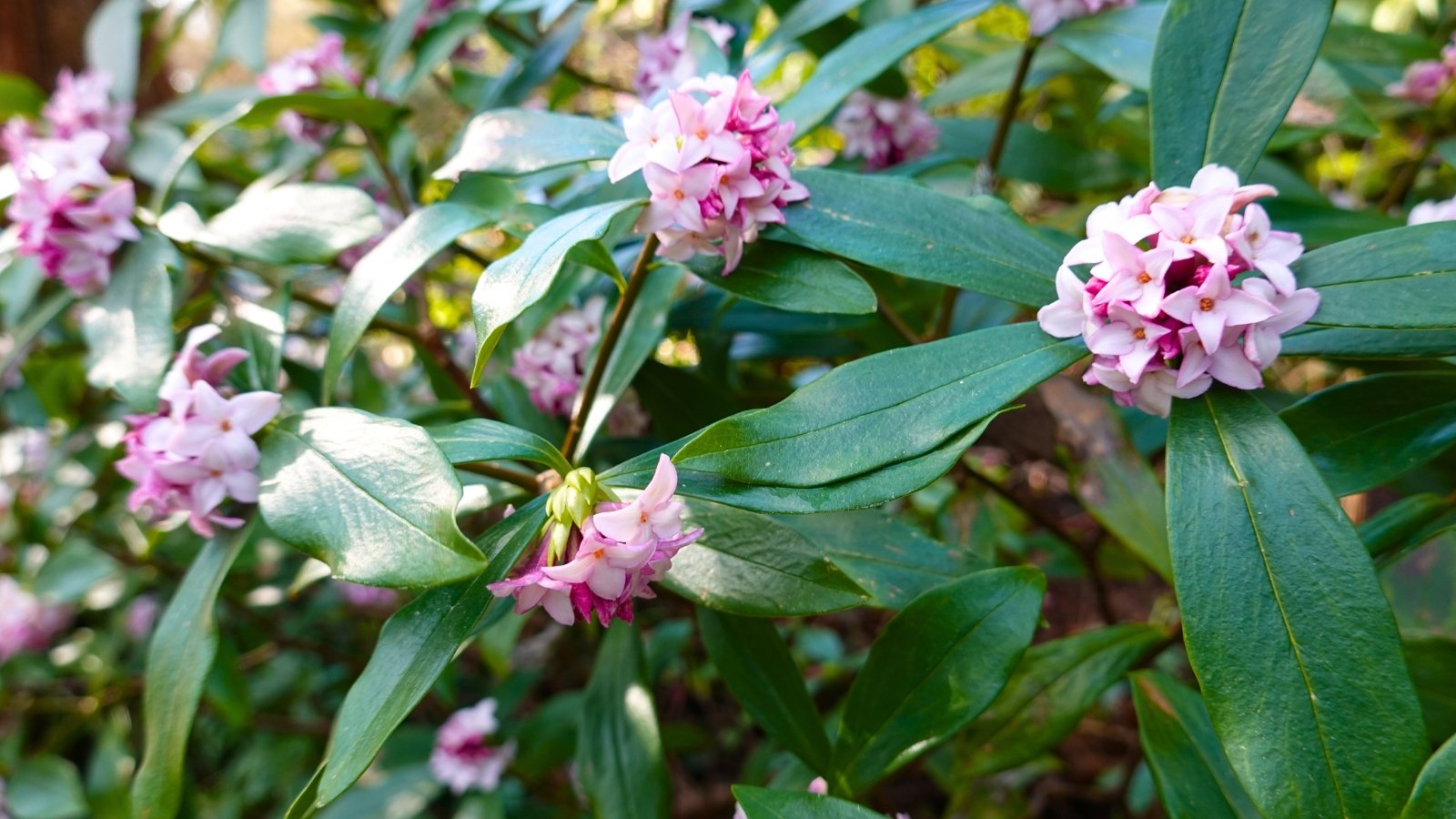

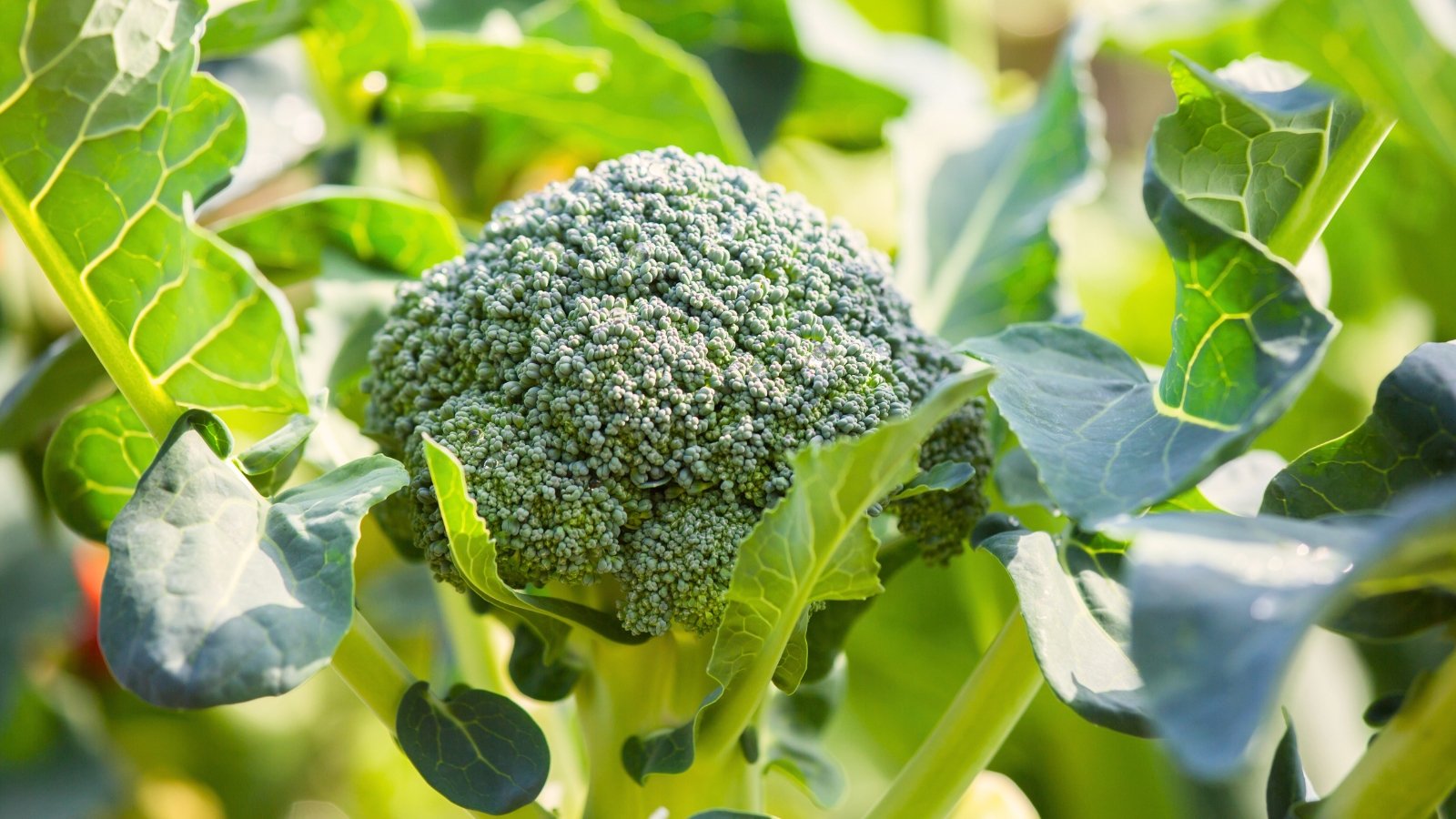

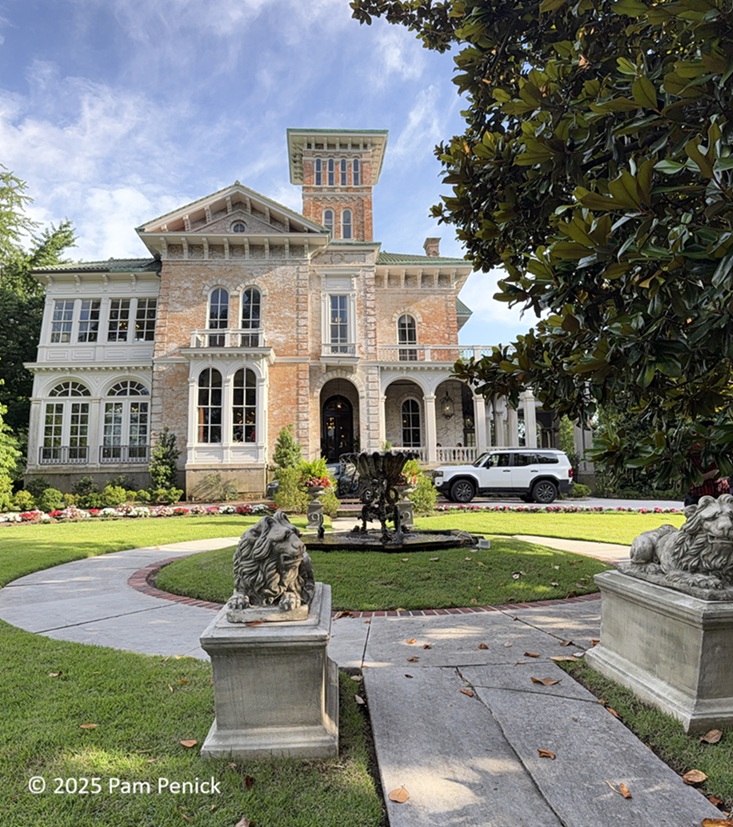
















 English (US) ·
English (US) ·  French (CA) ·
French (CA) ·